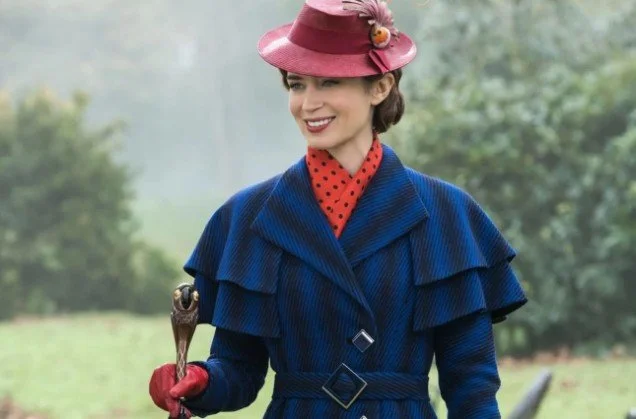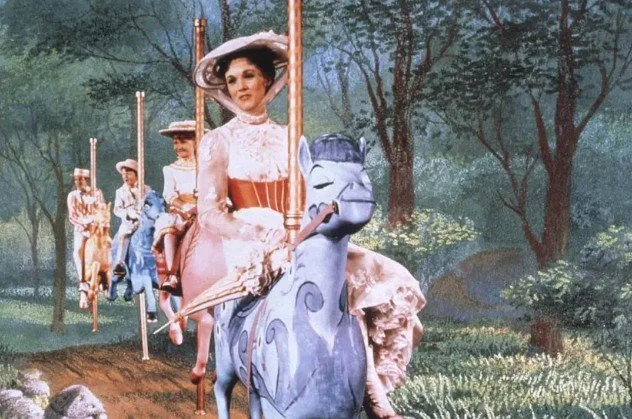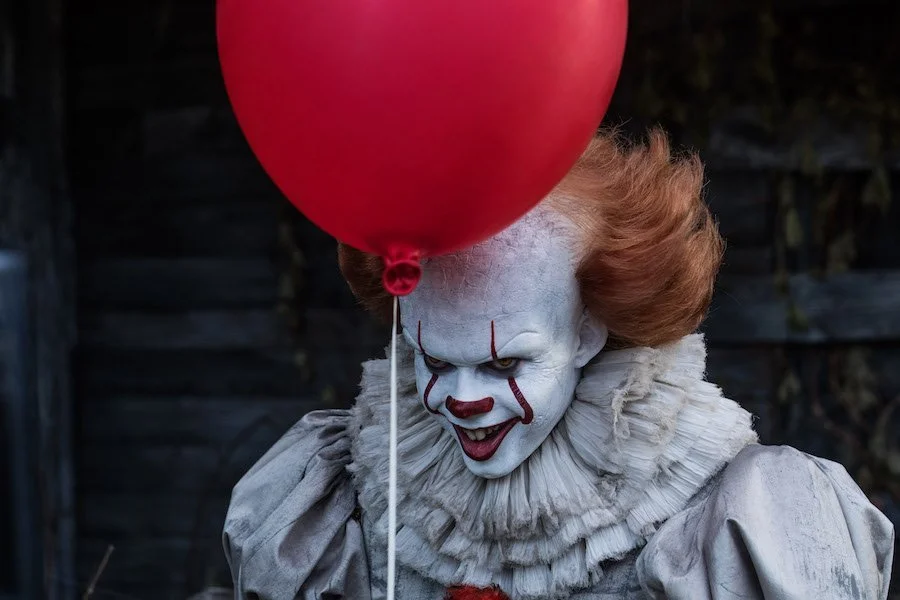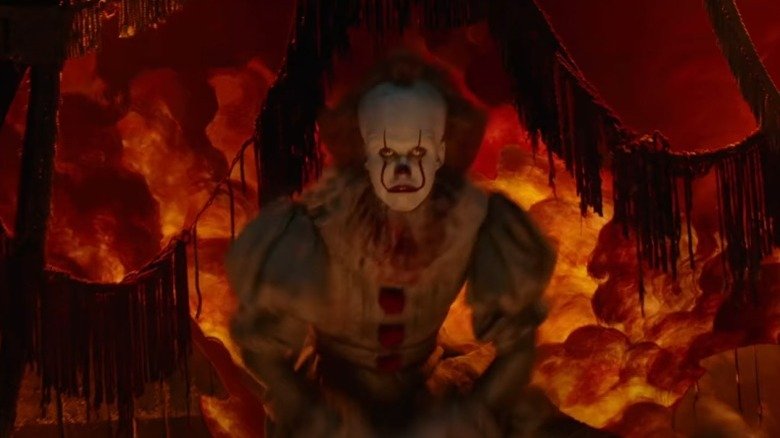The Pennywise/Mary Poppins Theory | Same Species, Different Diets?
With the popularity of the latest HBOMax show ‘IT: Welcome to Derry’ currently running. I thought it be fun to explore one of the craziest theories connected to Pennywise the Dancing Clown.
This crazy yet popular fan theory connects Pennywise to a seemingly opposite figure… Mary Poppins.
Now, at first glance, the murderous shapeshifting clown from It and the magical singing nanny from Disney’s Mary Poppins might have nothing in common since one inhabits a horror story in Derry, the other a whimsical tale in Edwardian London.
However, a fan theory that originated awhile ago apparently on Reddit proposes that these two characters are actually the same kind of being, just manifesting in different ways.
In essence, the theory positions that Mary Poppins and Pennywise are both ageless, otherworldly entities who feed on human emotion it’s just Mary Poppins feeds on positive emotions like joy, laughter, love while Pennywise feeds on negative emotions of fear and despair.
Yes I know… It sounds bizarre, but the comparison is surprisingly thought provoking when taken seriously.
Supporters of this idea have pointed out quite a number of intriguing parallels between the two widely distictly different characters.
The Cycle
Both Pennywise and Mary Poppins operate on a roughly quarter century cycle with children.
In Mary Poppins Returns, Mary comes back to the Banks family after about 25 years, arriving to guide and uplift a new generation of children (the offspring of her original charges).
In It, Pennywise awakens roughly every 27 years to terrorize a new generation of Derry’s youth.
The timing is similar, suggesting each being has a dormancy period after which they must interact with humans again. The theory humorously notes that according to the logic of Disney/Pixar’s Monsters, Inc., positive emotion is actually more potent than fear
“joy is more powerful than fear”
So Mary Poppins might not need to return quite as often as Pennywise. Nonetheless, the idea is that both are compelled to reappear periodically to recharge themselves by engaging with children’s emotions.
Feeding the Hunger
When Mary Poppins returns, what does she actually do? She isn’t just a normal nanny, no, she brings wonder, confidence, and happiness into the lives of the children, essentially nourishing herself on their joy.
Pennywise on the other hand, carefully engineers fear in his victims before devouring them, feeding on their dread. One Reddit user summarized it pefectly.
Mary Poppins could be an eldritch creature like Pennywise… but instead of feeding on fear, she feeds on joy.
Both characters thus thrive on childhood feelings, taking emotions to supernatural heights.
Notably, both typically focus on children rather than adults. Children’s emotions are stronger, more unfiltered.
Mary explicitly states that with a little imagination, every task can be fun (indicative of the abundant joy she cultivates), while Pennywise claims frightened children are easier to scare and “taste” better.
In both cases, kids are the prime targets because their feelings… be it pure happiness or pure terror are potent fuel.
Warping Reality
Another striking similarity is how both Mary Poppins and Pennywise have magic that interacts with the imagination of children, essentially making fantasy become reality.
Mary Poppins famously brings drawings and nursery games to life like jumping into a sidewalk chalk painting, floating up to the ceiling in a tea party of laughter, or conjuring animated penguins to dance with her.
These whimsical scenes in Mary Poppins are portrayed as if Mary is tapping into the children’s own imaginative worlds.
Likewise, Pennywise can reach into a child’s mind and pull out their worst nightmare, giving it tangible form. As some have pointed out, Mary and Pennywise “both have magical abilities that involve taking the ideas out of children’s heads and making them real.” The difference is in tone.
In Mary Poppins, imagination leads to delightful adventures (like an entire merry go round coming alive), whereas in It, imagination is twisted into horrific visions (Pennywise makes “children’s worst fears appear to come true,” such as a giant leper for Eddie or a demonic flute lady for Stan).
In both cases, the power originates from the children’s minds, suggesting each being can access a child’s innermost thoughts.
This extends even to how they present themselves.
Mary Poppins and Pennywise each shape shift or present illusions!
Mary can appear one moment in a mirror as a different reflection or tidy a room with a snap (small reality bending feats), and Pennywise of course assumes countless forms. Both even have a form of telekinesis (moving objects by will) and the ability to “float” in defiance of normal physics.
Age Matters Not
Both characters are effectively ageless and immortal (or at least unkillable by normal means).
Mary Poppins in the films looks similar decades apart and is unfazed by events that would harm a normal person (riding up banisters, perching on clouds).
Pennywise, as we know, has been around for millions of years and only plays at being a human clown… injuring his clown form only reveals something inhuman beneath.
Neither can be explained by conventional logic as both just are, and have been for a very long time.
They also both tend to depart abruptly once their cycle or purpose is complete.
Mary Poppins ascends back into the sky when the wind changes, mission accomplished and Pennywise falls into a long sleep (or is forced into one by defeat) until the next cycle.
Intriguingly, after they leave, people’s memories of them fade or normalize.
In It, the Losers Club (as adults) barely remember Pennywise or even each other until events force them to recall, and the town of Derry as a whole seems willfully forgetful of its violent history.
In Mary Poppins, the parents have a hazy recollection of the magical events, treating them as half dreams. This “veil” over memory might be another shared trait of their otherworldly influence.
Geographic Limits
Each character is also bound to a specific place or family. Pennywise is seemingly tethered to Derry as he’s a localized predator, not roaming the world but haunting the same town (perhaps because his “landing site” and lair are there).
Mary Poppins is bound to the Banks children (and later their children), returning specifically to that family in London when needed.
She doesn’t nanny any random kids… it’s always the Banks lineage. This specificity could hint that, just as Pennywise is Derry’s curse, Mary Poppins is the Banks family’s peculiar guardian angel (or parasite, depending on perspective).
The fan theory notes that kids in Derry and London can’t just swap monsters as each creature sticks to its own “territory” or chosen family.
The Georgie Connection
Perhaps the most eerie parallel (likely a coincidence, but fun to consider) is that both Pennywise and Mary Poppins make their first reappearance by charming a young boy named Georgie with a paper toy.
Both scenarios involve wind and weather (a rainstorm for Georgie Denbrough, a strong wind for Georgie Banks’s kite) and result in a supernatural character appearing.
Of course, one Georgie is subsequently devoured by a clown, and the other is whisked off to magical outings with a nanny… but the narrative rhyme is uncanny once pointed out.
It suggests that both Mary Poppins and Pennywise know exactly how to gain a child’s trust by starting with something the child loves (a toy, a balloon, a kite) and play the friendly helper.
Cosmic Siblings?
Thematically, one might say Mary Poppins and Pennywise each represent archetypal forces… almost like diametrically opposed cosmic siblings.
In the realm of Stephen King’s multiverse, there actually are other beings like Pennywise that feed on emotions besides fear.
King’s Dark Tower series introduces Dandelo, a creature who feeds on laughter and joy (disguised as a jokester who makes victims die laughing). Dandelo is explicitly of the same species or ilk as Pennywise, just targeting a different emotion. We can look at Dandelo essentially as a more malevolent Mary Poppins like being, one that also nearly kills with forced laughter.
Of course, all of this remains a fan theory for fun….Right?
There is no official connection between Mary Poppins and Pennywise in either King’s canon or Disney’s stories.
The theory originated from creative fans drawing parallels, and it gained traction because it’s a compelling exercise in analysis, not because anyone truly believes Poppins is haunting the sewers of Derry.
Nevertheless, it’s a theory that has been treated with surprising seriousness by some, precisely because it highlights how storytelling tropes and archetypes can echo across genres.
Both It and Mary Poppins tap into the notion of mysterious visitors who transform children’s lives, for good or ill.
By examining them side by side, we end up with a greater appreciation for how flexible the archetype of the “otherworldly guide” can be… manifesting as a beloved nanny in one tale and a nightmare clown in another.
The Pennywise/Mary Poppins theory also adds a light hearted, almost hopeful coda to Pennywise’s legacy… if an evil cosmic clown exists to prey on fear, perhaps a benevolent cosmic nanny exists to nurture joy.
It gives a new meaning to the phrase “opposite number.” As one commentator quipped, we’ll likely never know if this whimsical theory “really floats or not,” but it certainly is “a lot of fun to think about.
Sound off below on your thoughts about this crazy theory.







